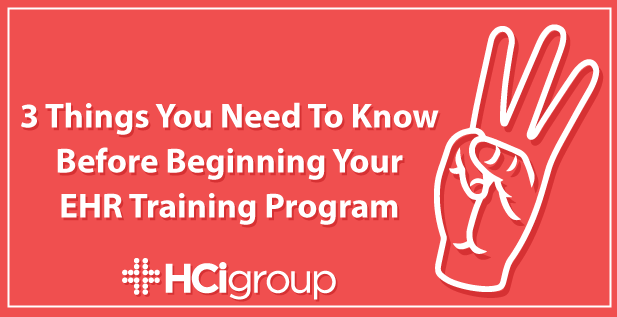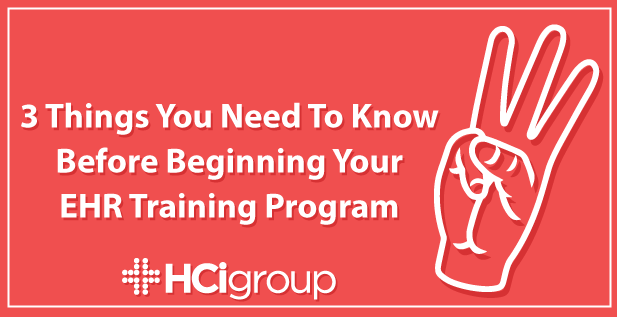3 Things You Need To Know Before Beginning Your EHR Training Program


With all of the organizational change that occurs during an implementation, it’s easy to unintentionally overlook some key aspects of setting up an EHR Training Program. Classroom training and backfilling will lead to added, and sometimes unexpected, costs. Additionally, remember that your staff must be trained before they can sign on to the new system. Among other things, failure to keep these factors in mind can result in lost time and may affect your budget. In this post, The HCI Group’s EVP Bob Steele offers three key points to remember during the on-going process of an EHR Training Project.
1) Acknowledge that EHR Training is Amongst the Highest Cost Phases of Your Project
First and foremost, you must accept that training will be one of the highest cost phases of the implementation. The pre go-live training phase will be your end users’ first impression of the system and must introduce a high volume of information in a short period of time. It will affect all aspects of their daily work lives and responsibilities; it can be quite a stressful change if training is not managed well.
You will have costs associated with the appointment of SME’s, analysts, and staff experts for the development and scheduling of the training curriculum and processes. You will incur costs for training the trainers (staff), as well as backfilling for their regular duties while they perform training duties. This can become quite expensive as you begin to consider the number of backfilled staff required. The final consideration is the costs associated with the actual training of facility staff, sometimes requiring education of over one thousand staff members and providers.
EHR training may include pre-classroom self-studies, classroom training, and, in some cases, simulation labs – all of which can take anywhere from 4-6 hours to 2-3 days, depending on position and job responsibilities. Again – depending on Service Line Area – these positions may need to be backfilled, which will add cost.
One way to avoid the cost of backfilling is by utilizing third-party vendors. While third-party vendors may seem to be the more expensive option, the cost of training and relieving facility trainers, as well as having to backfill to cover their regular duties, may turn out to be more costly.
2) Scheduling and Flexibility Within Your EHR Training
Day-to-day Patient Care (Safe Patient Care) and business operations must go on. Match the total number of end users to be trained with your available classrooms and computers to determine the number and amount of classes to be offered. Hands-on computer classroom training is imperative. Remember, backfill or relief from regular responsibilities is not an option for some (especially the provider group). Consider weekend, evening, and even night shift classroom training to accommodate end user needs.
A good practice is to incorporate a variety of learning methods and methodologies to address all types of learners. This includes self-studies, web-based training, simulation labs, mock go-lives, and of course, traditional classroom and hands-on training. Try to avoid disruption of daily responsibilities as much as possible and increase overall compliance numbers of those who are successfully trained by go-live. One of the best ways to ensure your staff is adequately trained is to enforce “no training, no sign-on.” Before users can access the new system, they absolutely must have completed their training program.
3) EHR Training is a Never Ending Process
Understand that training is a never-ending process. After go-live, training and training costs will transition from a project cost to an ongoing operational cost. There will be continuous training of new staff hires and providers, as well as frequent system and application upgrades. Medicine and Industry standards and changes in areas such as clinical best practices, quality measures, and meaningful use will also be prevalent. Training is an ongoing journey, so it is important to have a well-oiled and independent facility team to carry on the process.
Training is a pivotal part of any new EHR implementation. Keeping these three key aspects in mind will help your organization prepare for this important phase and the challenges it can bring. These principles make up a small piece of the EHR training process.
Make sure to download the full white paper to get a comprehensive guide on what to expect during an EHR Training Project. And, of course, please fill out the form below to get in contact with us—we’d love to hear from you.
Additional Resources You May Be Interested In:
- eBook: The Definitve EHR Go-Live Guide
- Go-Live Support: Training and Super-User Support
- Go-Live Support: Pre & Post Go-Live
- Go-Live Support: Operation Communication

